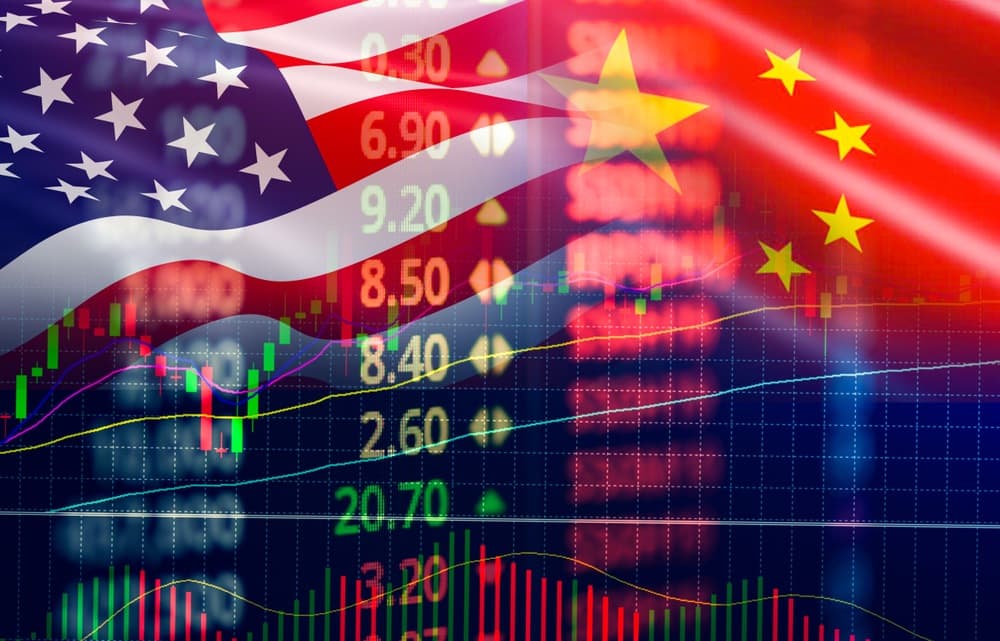
After a review of social media overnight and this morning, we came away with an uneasy feeling. The financial architecture of the world, one would believe, is coming apart at the seams.
Let’s start where few on Wall Street will: the Kremlin’s allegation that Washington is preparing a “crypto escape hatch” for its debts.
In a press conference yesterday, Vladimir Putin’s adviser Sergey Kobyakov put it starkly:
“The U.S. is now trying to rewrite the rules of the gold and cryptocurrency markets. Remember the size of their debt — 35 trillion dollars. These two sectors (crypto and gold) are essentially alternatives to the traditional global currency system.
Washington’s actions in this area clearly highlight one of its main goals: to urgently address the declining trust in the dollar.
As in the 1930s and the 1970s, the U.S. plans to solve its financial problems at the world’s expense — this time by pushing everyone into the ‘crypto cloud.’ Over time, once part of the U.S. national debt is placed into stablecoins, Washington will devalue that debt.
Put simply: they have a $35 trillion currency debt, they’ll move it into the crypto cloud, devalue it — and start from scratch.
That’s the reality for those who are so enthusiastic about crypto.”
Set aside the propaganda, he’s not wrong.
In 1933, FDR devalued the dollar versus gold. In 1971, Nixon severed the link entirely.
In each case, the U.S. changed the rules to shrink real debt burdens — with costs exported to foreign creditors.
A tokenized-Treasury world would be the digital sequel: frame a conversion as “market plumbing modernization” during a liquidity panic, make access to dollars contingent on adopting the new wrapper, then ease the terms underneath.
You don’t have to buy Kobyakov’s conclusion to see why it resonates. The leverage is simple: the world still settles in dollars.

 A Trying Time for the Great Reset
A Trying Time for the Great Reset
It’s going to be a tough couple of days (weeks?) for Karoline Levitt, Trump’s own Press Secretary. We captured this note from Porter Stansberry on X this morning:
“Everything Trump promised:
#1. Release the Epstein papers? Nope, now Epstein’s abuse of underage women for decades is just a hoax.
#2. No more wars? Hahaha, you must be kidding! Trump created “The War Department.” He bombed Iran. He’s sending MORE weapons to Ukraine. And starting a war with Venezuela.
#3. Mass deportations? Go to Home Depot. Tell me what you see.
#4. Tariffs to balance the budget? Only Congress can create new taxes. Trump’s are blatantly unconstitutional. And even if Congress decides to pass them, they still wouldn’t generate enough revenue to offset the INCREASES to government spending.
Which brings me to my favorite of Trump’s flimflam:
#6. DOGE $1 trillion in gov spending? Hahahaha. You really believed that any spending — even a single nickel — would ever be cut…? Suckers!
Set aside the propaganda. He’s not wrong.
Porter signed off:
“Never underestimate the stupidity of the American people.” Phineas T. Barnum
Add to that, and the Bureau of Labor Statistics (BLS, with an emphasis on BS) reported that the labor market was overstated by 911,000 jobs. Not as bad as last year’s 1 million downward revision, but close.
The good news for the incumbent administration? The 12-month period goes from March 2024 to March 2025, covering only two months of Trump’s second term. Given the decline in industrial jobs since “Liberation Day” uncertainties kicked off, expect next year’s massive revisions to likewise trend lower.
It’s one more data point to suggest that cutting interest rates isn’t the worst idea right now – if, say, you were a central banker with a mandate to ensure full employment.

 Twelve Bureaucrats and Your Mortgage
Twelve Bureaucrats and Your Mortgage
Doug Casey skewers today’s Fed drama:
“Twelve bureaucrats set interest rates for a $27T+ economy — managing everything from mortgages to corporate debt to savings accounts.
It’s absurd.
Markets — not monetary politburos — should determine rates.
Until we end this central planning madness, we’ll keep getting boom-bust cycles, inflationary bubbles, and government free lunches paid for with your future.”
And Ray Dalio adds the macro coda:
“When I look at the U.S. and global debt burdens and how countries are likely to respond, I worry about the possibility of creating a stagflationary environment… That’s one of the reasons I say that gold will be a better performing asset.”
Cut rates, goose assets, erode purchasing power — repeat until faith runs thin. Gold tends to be the outlet valve.

 Gold’s New Friends: Tether and Goldman
Gold’s New Friends: Tether and Goldman
Cognitive dissonance in crypto land: Tether — the world’s largest stablecoin operator — has been building a gold hoard (~$8.7B in bullion in Zurich) and, per reports, talking to miners about investing up the supply chain.
Meanwhile, Goldman’s David Kostin named gold miners a favorite into year-end: central bank demand, ETF inflows, and price momentum all rhyme with a 1970s-style bull.
Miners popped on cue: Harmony Gold, Gold Fields, and AngloGold all rose today. The subtext: when even “digital gold” money pipes are hedging with the “natural” kind, the migration from fiat risk to hard collateral is broadening.
For better or worse, the immediate path forward still hinges on the Fed.
With unemployment rising, JOLTS deteriorating, and revisions threatening to take yet another bite out of payrolls, Powell has political and data cover to ease. A quarter-point cut is the base case. Odds of a half-point are climbing.
Here’s how that bifurcates:
• 25 bps: cash trickles out of money funds, long yields nudge lower, stocks grind higher with narrow leadership. Gold rallies but breathes.
• 50 bps: cash rotates faster, duration rips, dollar wobbles. Equities can melt up — especially megacap tech — until the bond vigilantes reassert and force a second look at deficits. That’s your “most terrifying bull market”: rising prices driven not by broad earnings power but by a scramble to outrun monetary dilution.
Either way, the gold complex benefits as policy leans more easily into a worsening fiscal math on a global scale. Europe’s second-largest economy just plunged into chaos.

For the second time in under a year, France’s government has collapsed. Source: StockMarket.News
Macron is now the first president since 1953 to suffer two collapses in 12 months.

 Politics & Policy: The Contradiction File
Politics & Policy: The Contradiction File
Trump’s push for tariffs and domestic re-industrialization is colliding with labor and visa realities on mega-projects. Allies who pledged hundreds of billions in U.S. investment balk at raids and unpredictability.

At the same time, the administration courts Silicon Valley with promises (and warnings): spend on AI here, expect stiffer duties on chips there, but don’t worry — “friends” get exemptions.
That is how confidence erodes: rules that feel contingent on proximity to power.

 Robinhood’s Turn
Robinhood’s Turn
As they do from time to time. Standard & Poor’s shuffled the deck last Friday. The makeup of the indexes we watch as a barometer for the health of the market has been reworked.
AppLovin, Robinhood, and Emcor Group will join the S&P 500 on September 22, replacing Caesars Entertainment, MarketAxess, and Enphase.
The headline grabber was Robinhood, which jumped nearly 16% as index trackers prepared to buy. Fans cried foul in earlier rebalances — Block got the nod back in July with a smaller market cap — so this has a score-settled feel.
Mechanics matter: inclusion forces passive funds to purchase shares, often creating a tailwind into the effective date. But committee discretion also matters.
They’re balancing sector weights and balance-sheet quality. As always, the index is both a mirror and a maker of momentum. And the tech stocks continue to remain overweight the index as the AI bubble blows bigger.

 $7.4 Trillion Waiting Room
$7.4 Trillion Waiting Room
Money-market funds sit at a record ~$7.4 trillion.
That’s yield-seeking capital refusing duration or equity risk — classic post-bust behavior we saw after 2000, 2008, and in 2020–21.
If the Fed trims 25 or 50 bps on September 17, front-end yields will start to drift down. No stampede, but the carry edge erodes and rotation begins: first into Treasuries for safety and liquidity, then — if confidence holds —into risk assets.
Scale is the wildcard.
A mere 10% redeployment is hundreds of billions. A cautious 25 bps cut bleeds slowly. A 50 bps cut could hasten the shift – if it doesn’t spook markets instead – pulling cash into the long end (pressuring yields lower) and, later, into equities.
With this much dry powder, the how matters as much as the whether.
We’re going to explore Trump’s push for a Shadow Fed and its impact on the American Dream in Grey Swan Live! this Thursday, September 11, 2025, at 2 p.m. See details in the P.S. below.

 Sentiment Without a Net
Sentiment Without a Net
A funny thing about surveys: they’re often most bullish at the top.
The share of retail investors expecting stocks to fall is at a 15-year low. That looks “strong,” but it’s really fragile. Complacency leaves no cushion for disappointment.
In the spring, bearishness was extreme, and the market rallied because the pain trade was up. The results of today’s survey simply reflect sentiment – which can, and often does, change on a dime.

 Some Takeaways From Today’s Review of “The News”…
Some Takeaways From Today’s Review of “The News”…
- Don’t confuse a bidless alternative with safety. Dollars remain the world’s grease, which gives Washington options others lack — up to and including “rule changes.” That’s leverage…but it’s also borrowed time.
- Respect the magnitude of cash on the sidelines. Its redeployment will dictate the tone of Q4 more than any single earnings print.
- Own some tangible assets alongside good businesses. If policymakers thread the needle, quality equities compound. If they don’t, bullion and the better miners provide ballast — and optionality.
- Beware consensus euphoria. When “no one” expects a decline, the most minor shock hits hardest.
~ Addison
P.S.: Grey Swan Live! this week: Mark Jeftovic joins us for “Shadow Fed & the American Dream” — how a September rate cut could hit the dollar’s purchasing power, where the money-market flood might go next, and why “control of money” is migrating from central banks to code, corporates, and courts. Bring your questions.

Your thoughts? Please send them here: feedback@greyswanfraternity.



